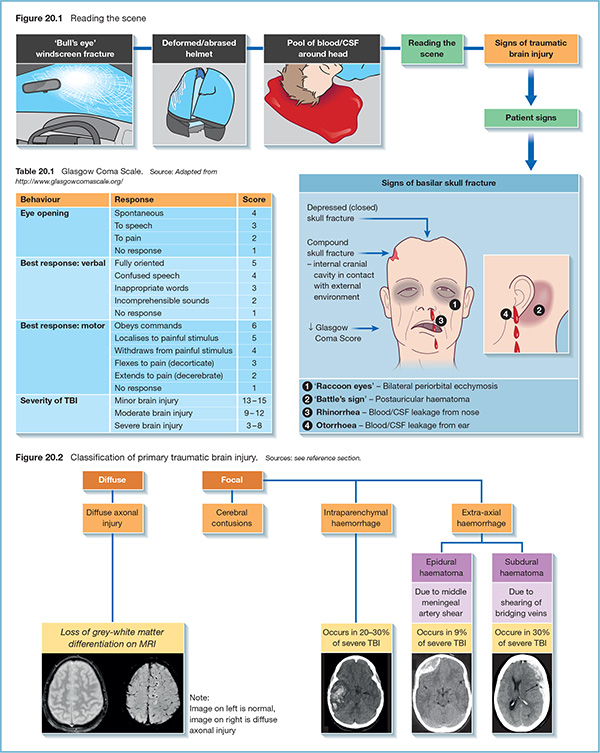20 Fifty percent of all patients dying from major trauma die as a direct result of significant head injury. Mortality in severe traumatic brain injury (TBI), defined as a GCS <8, approaches 50%. Optimal management in the pre-hospital phase is absolutely paramount in minimising the high burden of mortality and morbidity associated with head injury. Traumatic brain injuries occur mainly in men (70–88%), who are 3.4 times more likely to die than women from these injuries. Alcohol is involved in up to 65% of all cases of TBI. Other causes include road traffic collisions, falls and assaults. These statistics are helpful in predicting those patients at risk of sustaining head injury even before arriving on the scene, where equating mechanism of injury with injury prediction will allow effective treatment and intervention. The likelihood and severity of TBI is indicated by the important clues from reading the scene before the patient is assessed for specific symptoms and signs of head injury. Primary brain injury refers to the physical damage at the initial point of insult. This may be either from blunt or penetrating trauma with damage occurring directly at the site of impact, or indirectly, from movement of the brain within the skull, resulting in cerebral contusions (coup-contrecoup). Shearing and rotational forces as the head is rapidly accelerated and decelerated cause disruption of blood vessels and axons, causing intracranial haemorrhage (ICH) and diffuse axonal injury. Primary brain injury can only be prevented by public health education initiatives, e.g. wearing cycle helmets, etc.
Head injury

Demographics and aetiology
Primary vs secondary brain injury
Primary brain injury
Secondary brain injury

Full access? Get Clinical Tree








